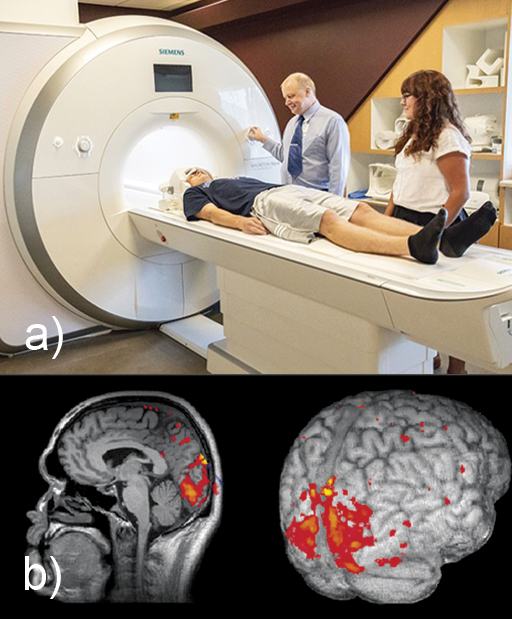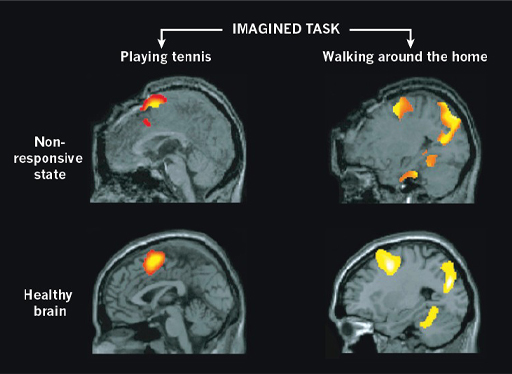Imaging
New imaging techniques give us more detailed ‘snapshots’ of what’s going on inside the brain. These don’t measure the electrical activity of neurons directly, but measure other things associated with brain activity. Active regions in the brain require more oxygen, which is supplied by an increased blood flow. This can be measured in various ways, but the most common technique uses the fact that the increased oxygenation changes the magnetic properties of the blood. This is detected non-invasively by an fMRI (functional Magnetic Resonance Imaging) scanner. Figure 12 shows such a scanner, and a scan showing regions in the brain that become active in response to a visual stimulus.
Researchers can observe active regions in the brain associated with carrying out tasks or having different experiences, including sensing pain, using language, storing memories, feeling particular emotions, and so on. These same regions are even activated when a subject is asked to imagine doing something. In Figure 13, brain activity in an area associated with movement is seen when the subject imagines playing tennis, and activity in areas associated with movement and memory is seen when the subject imagines walking through their own home. Similar brain activity is also seen when some apparently non-responsive patients are asked to imagine these tasks.
Each individual ‘voxel’ (like a 3-dimensional pixel) of current fMRI images still covers a broad region of the brain, encompassing many thousands of neurons. But this resolution is improving over time, allowing more and more detailed pictures of brain processes.


